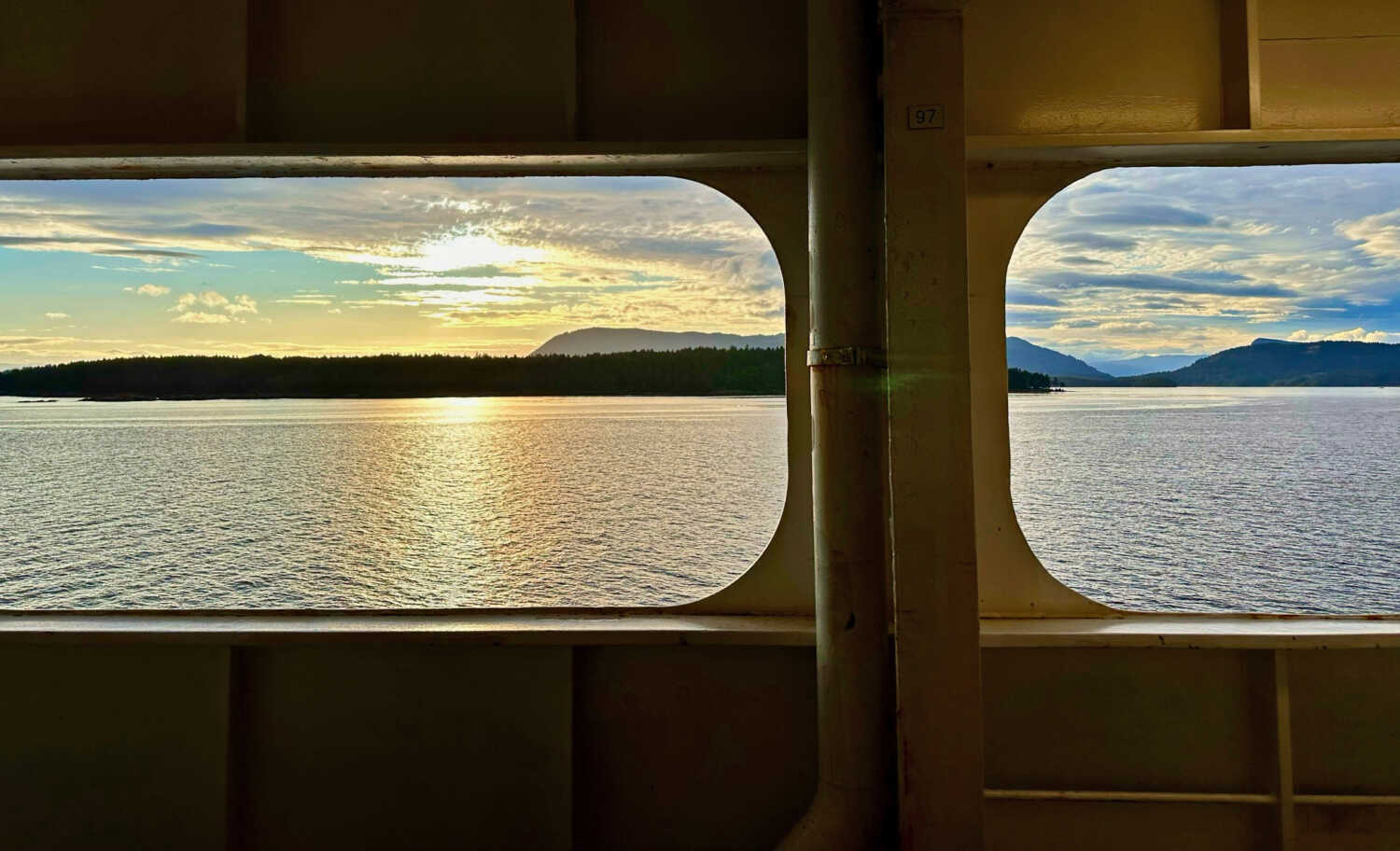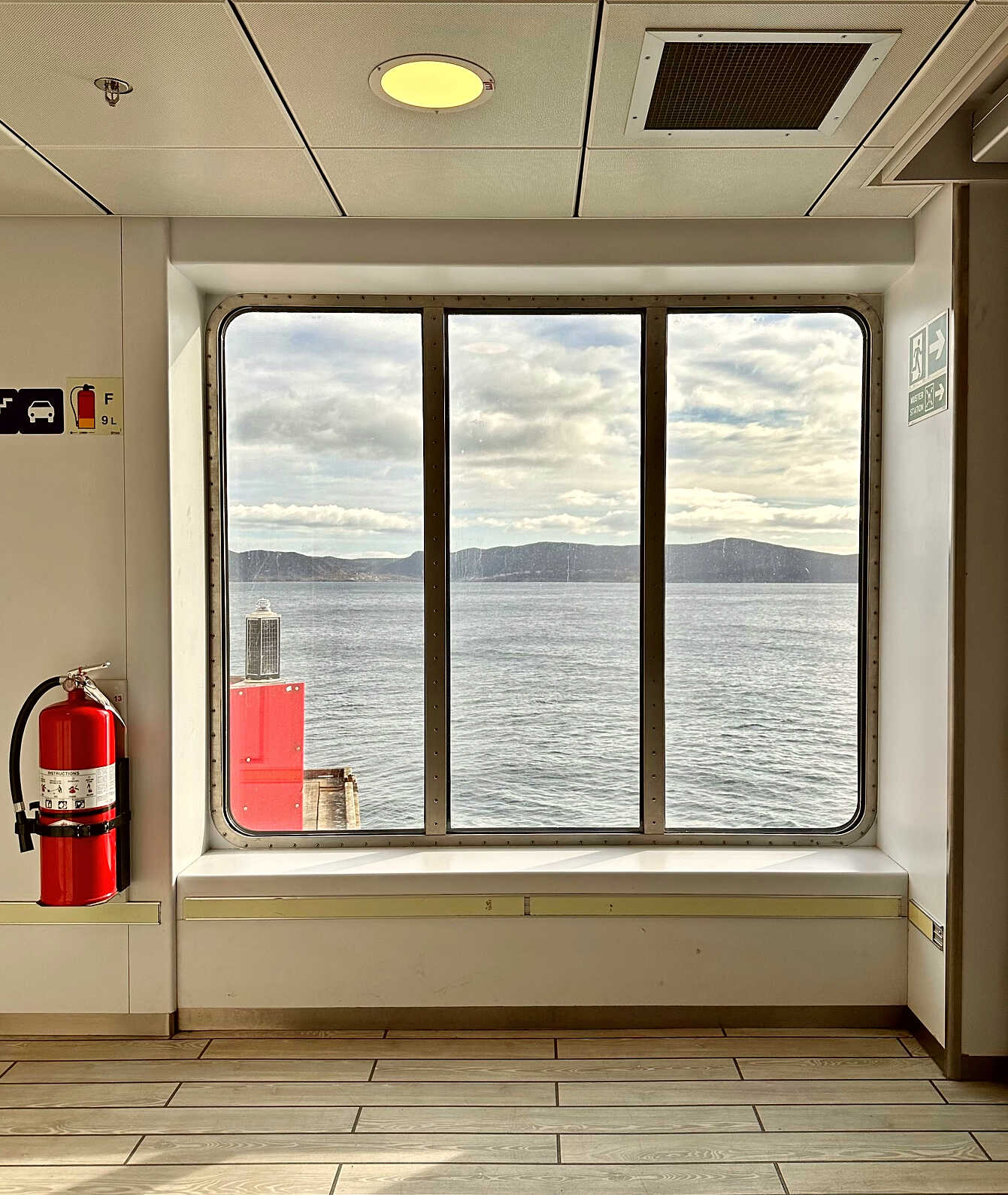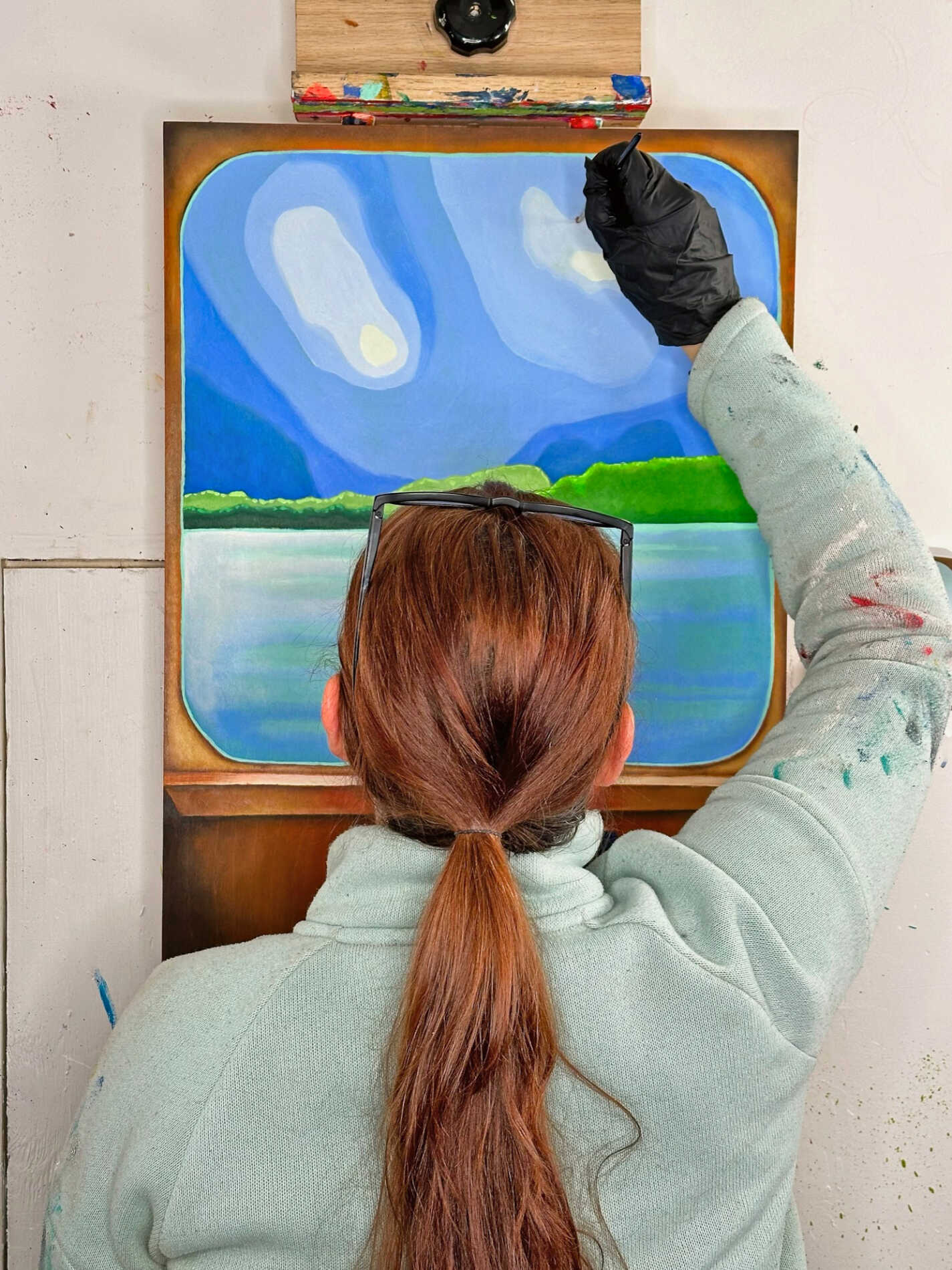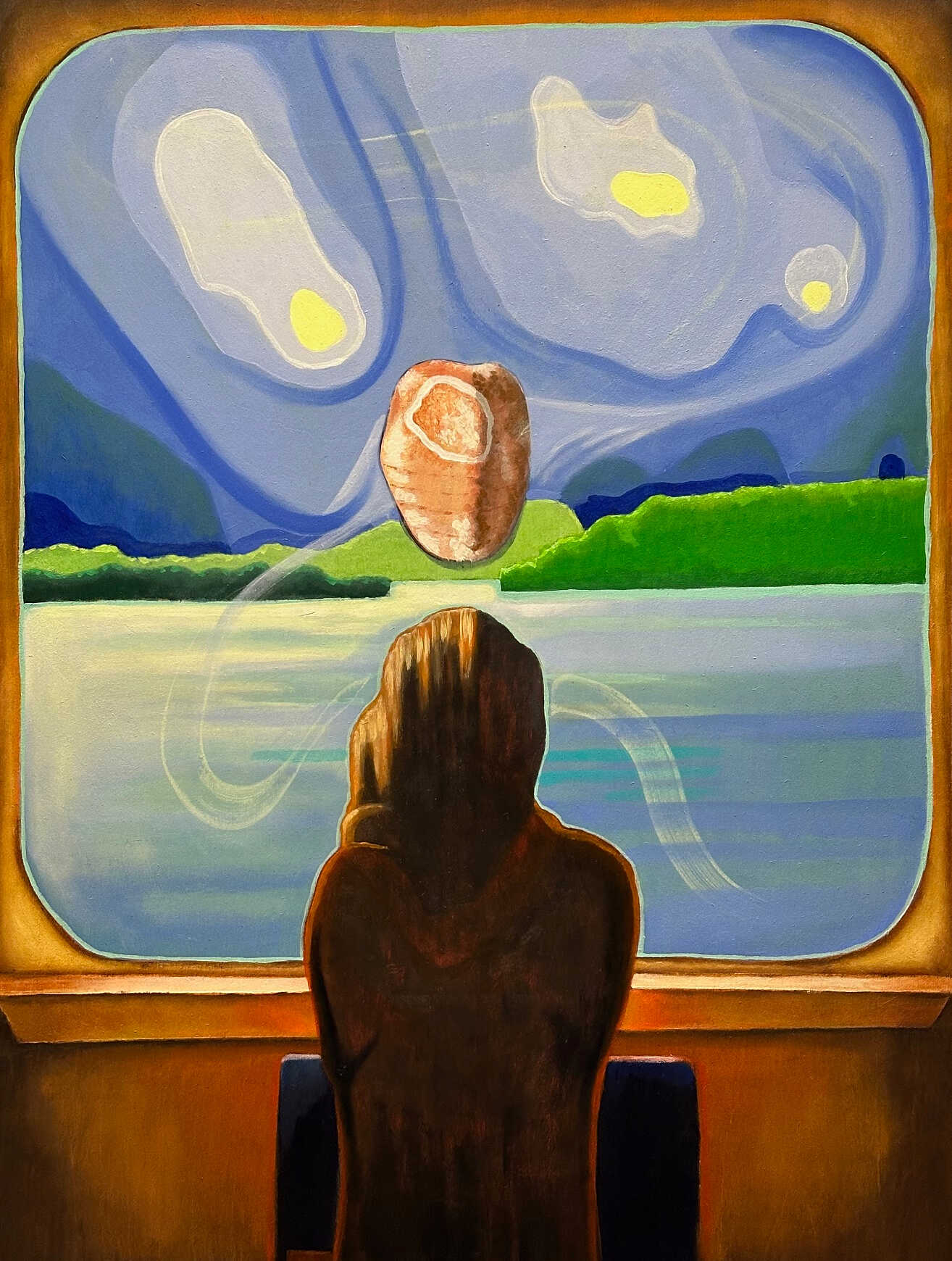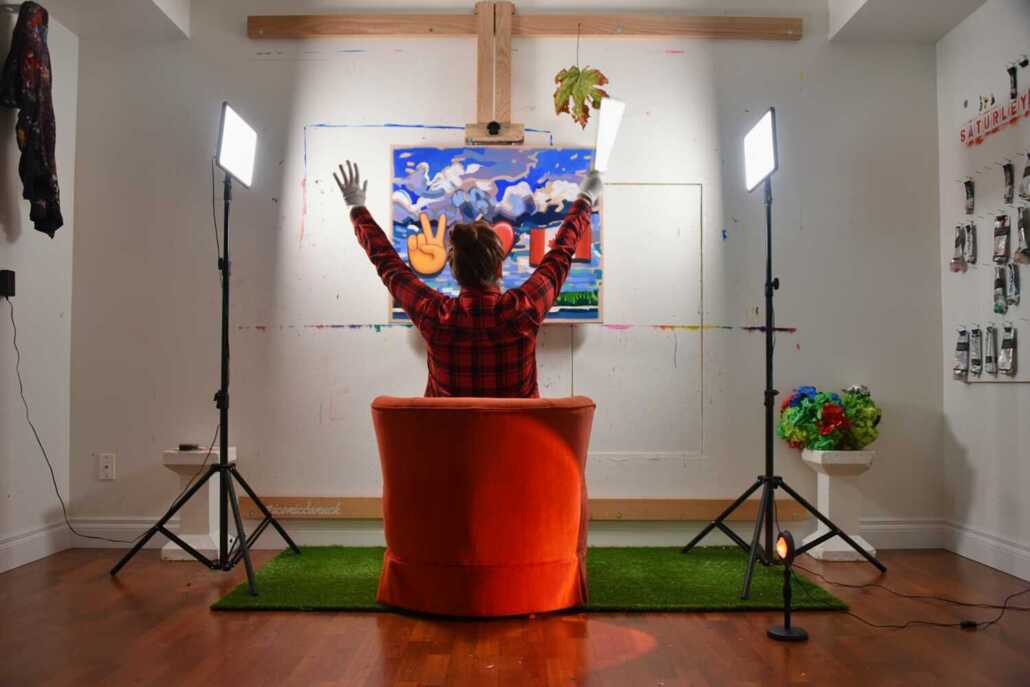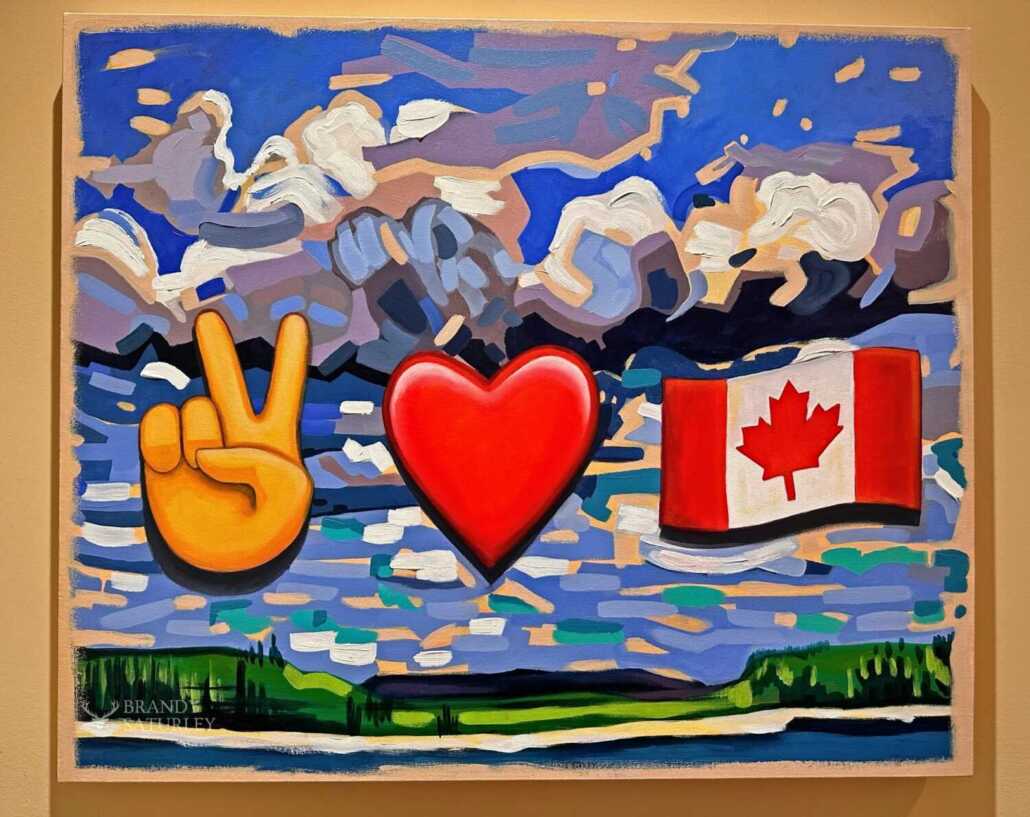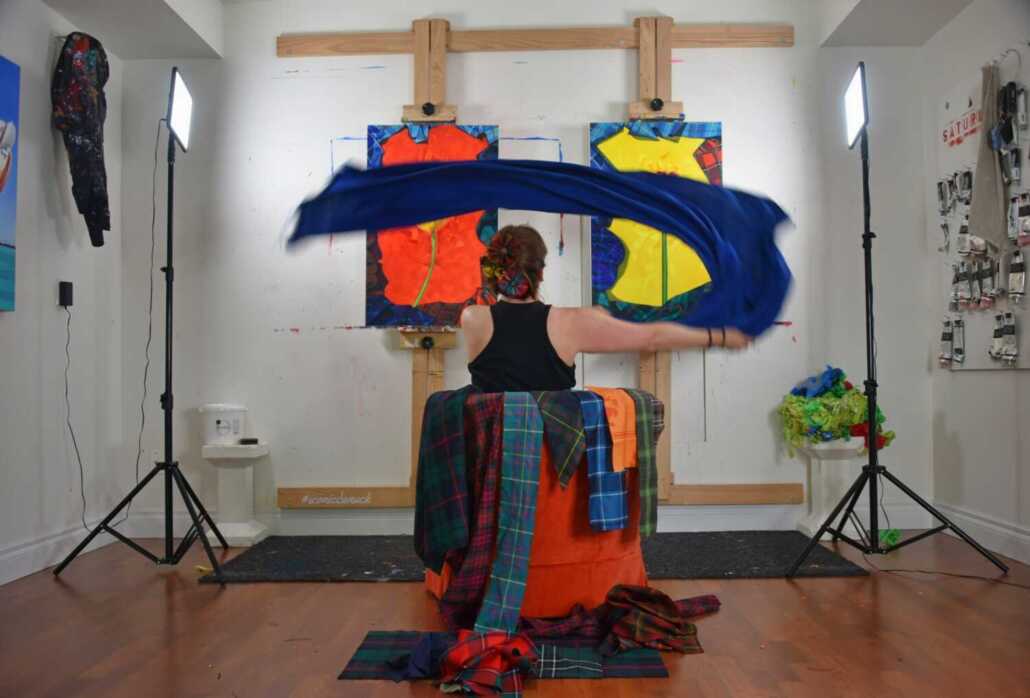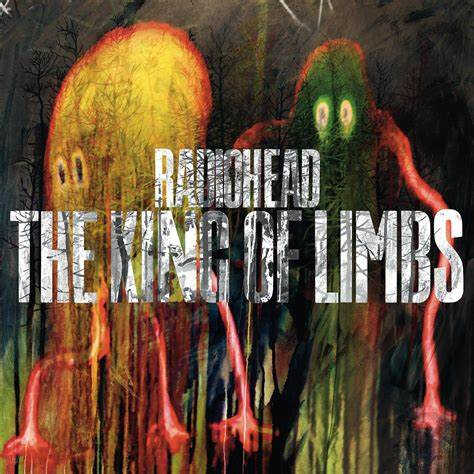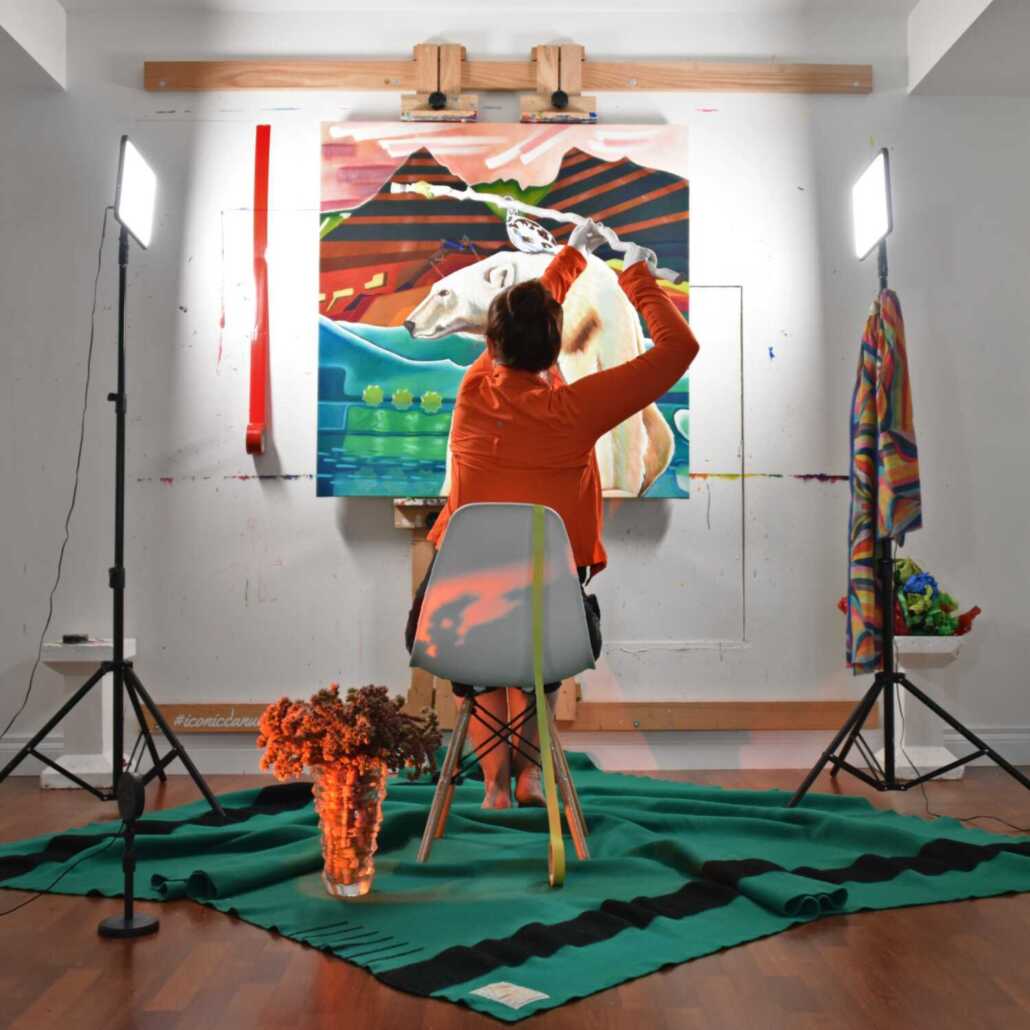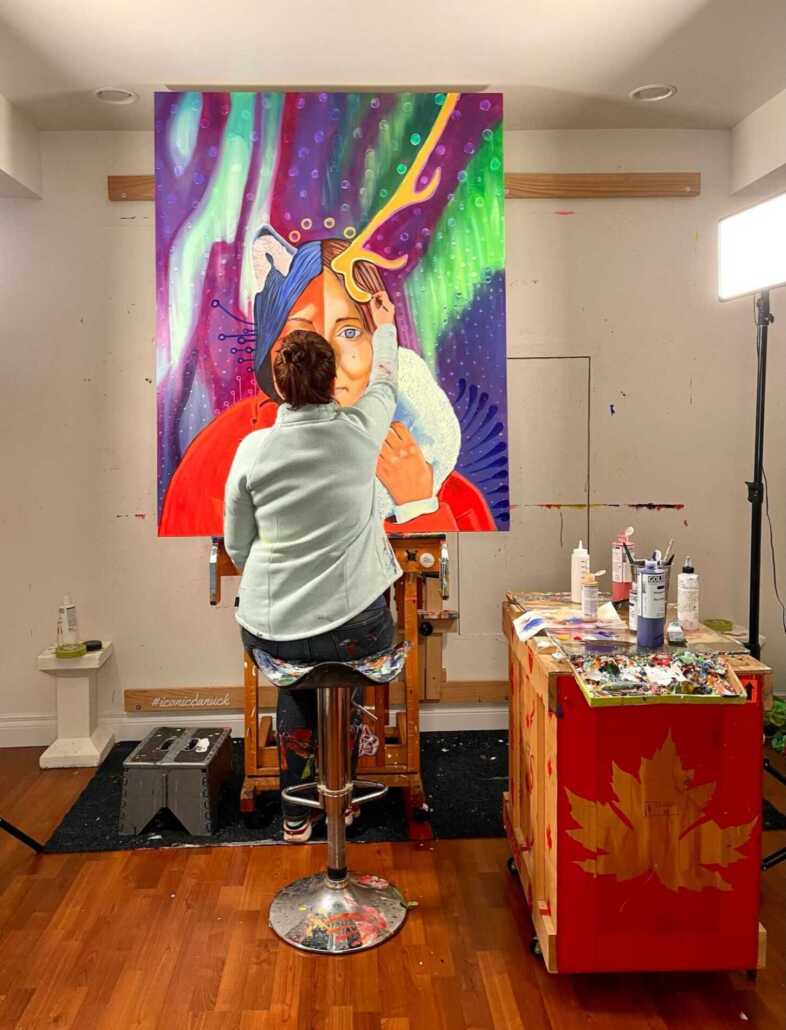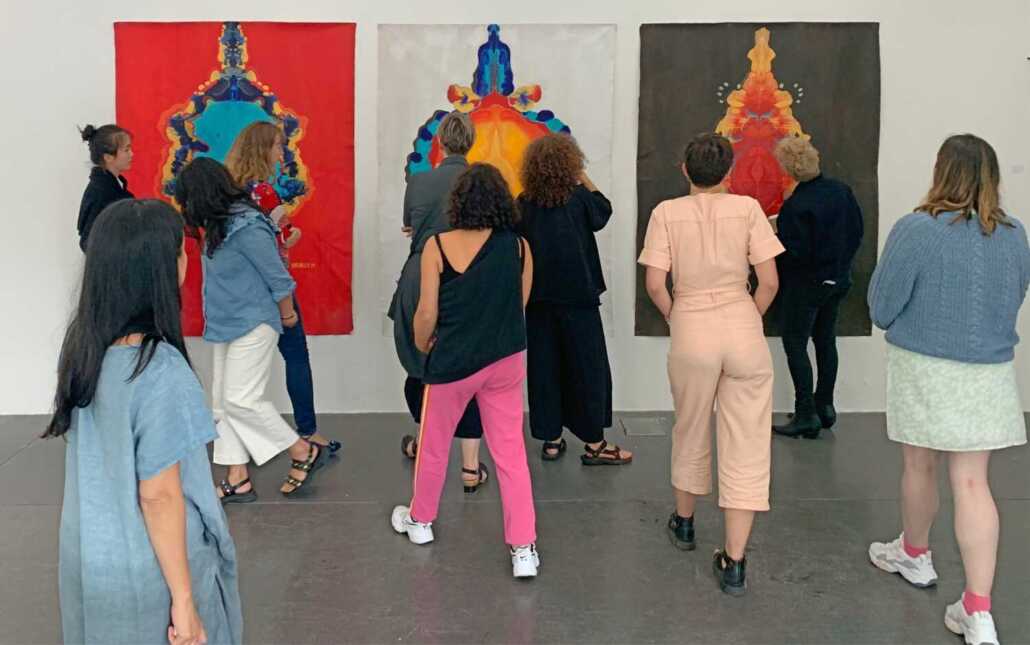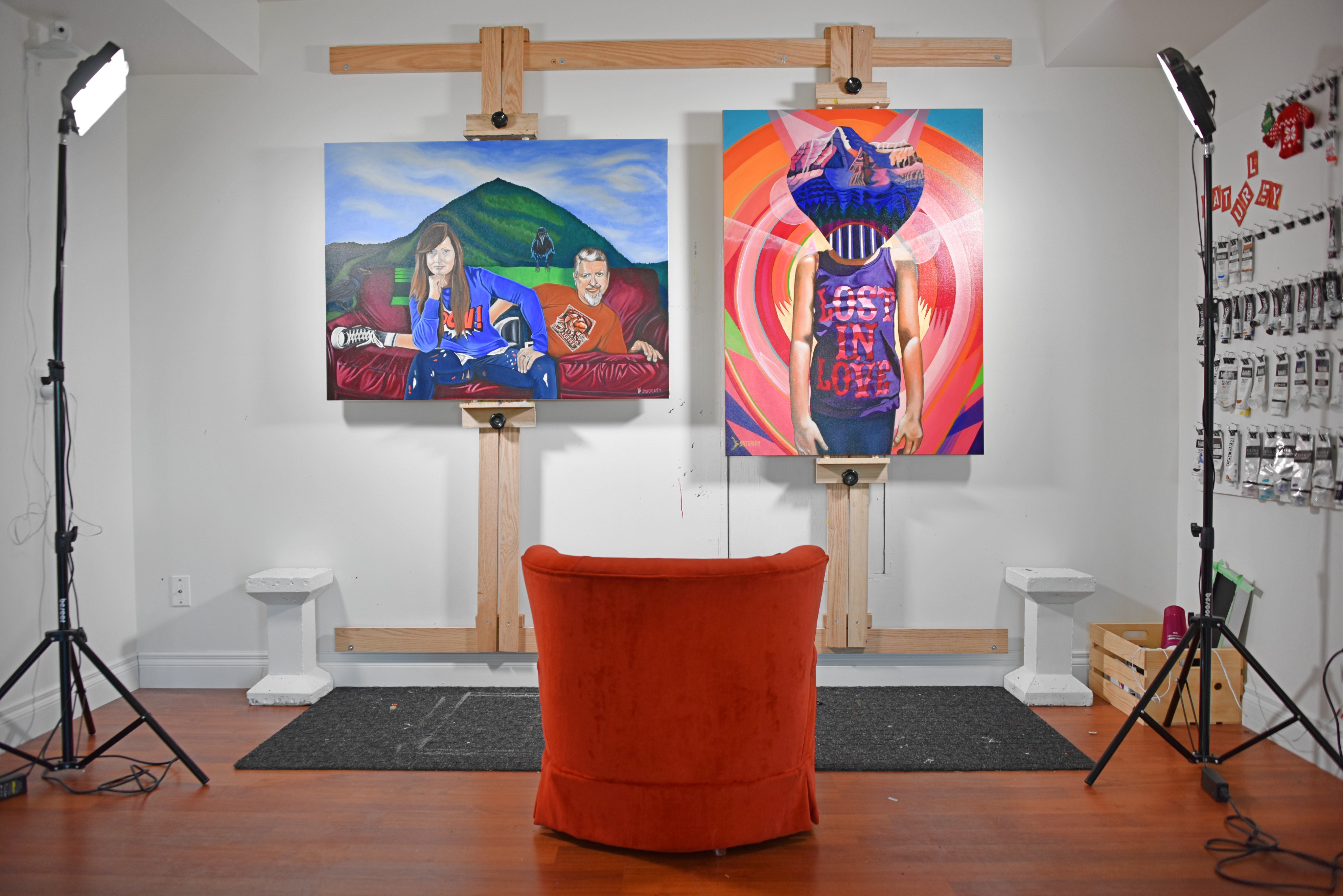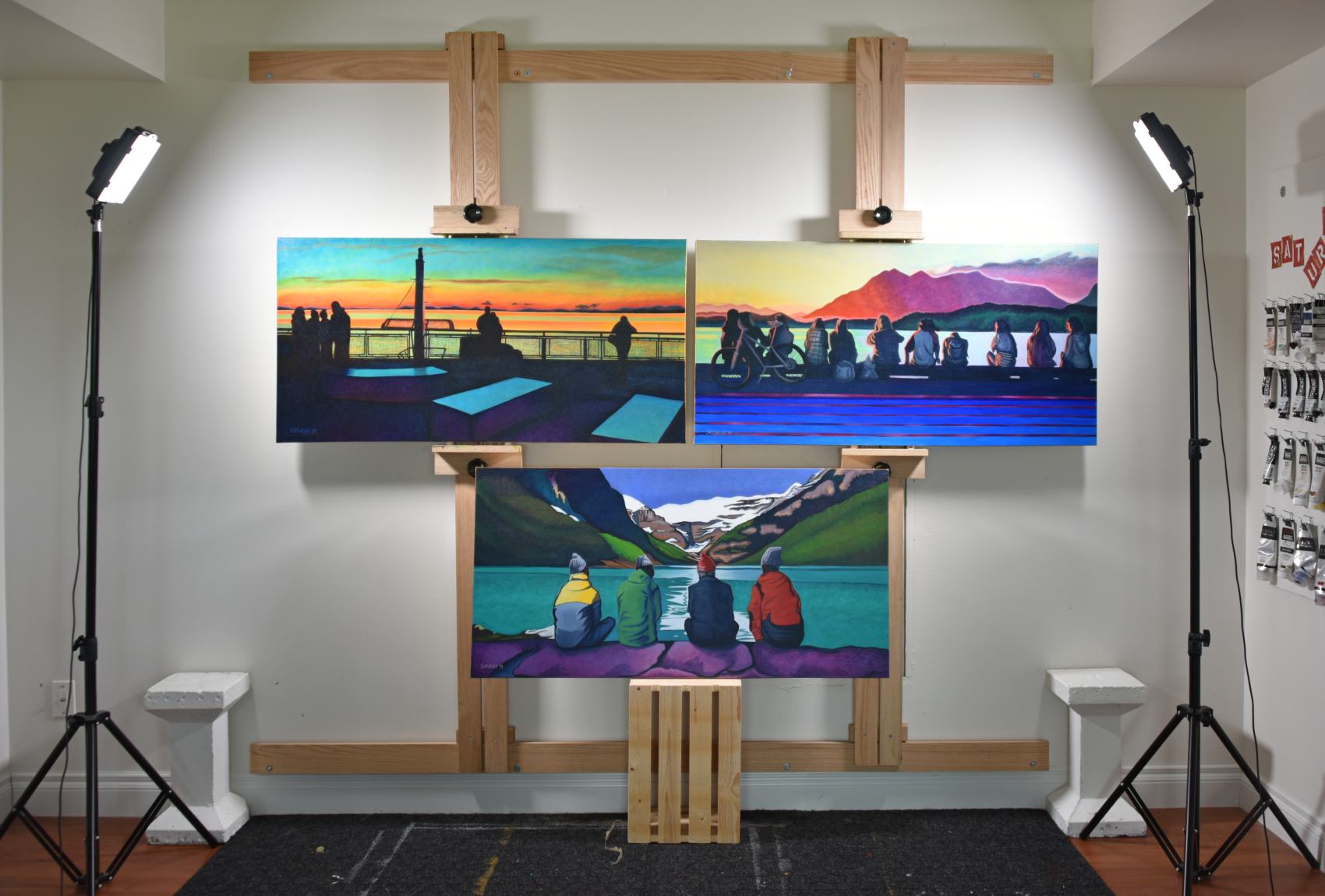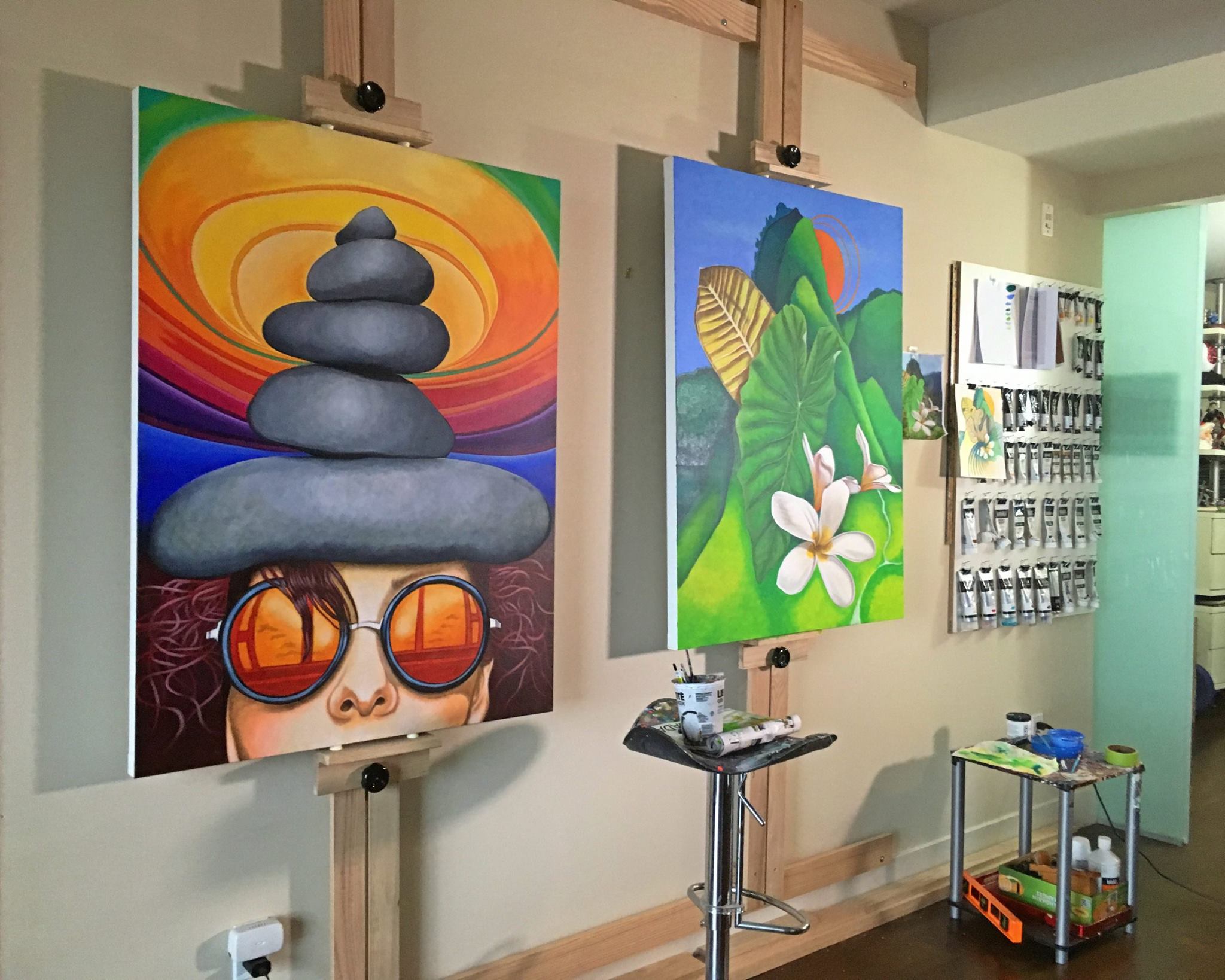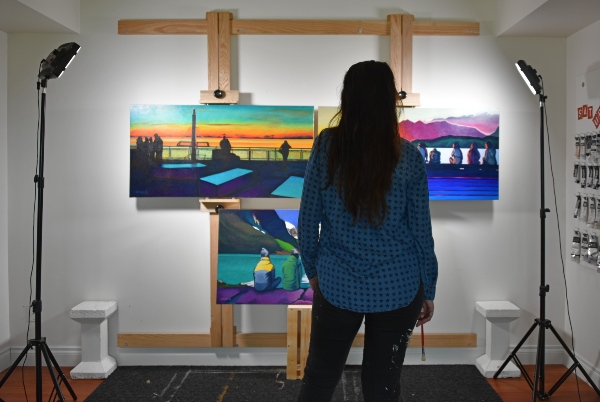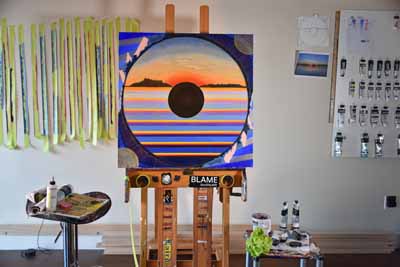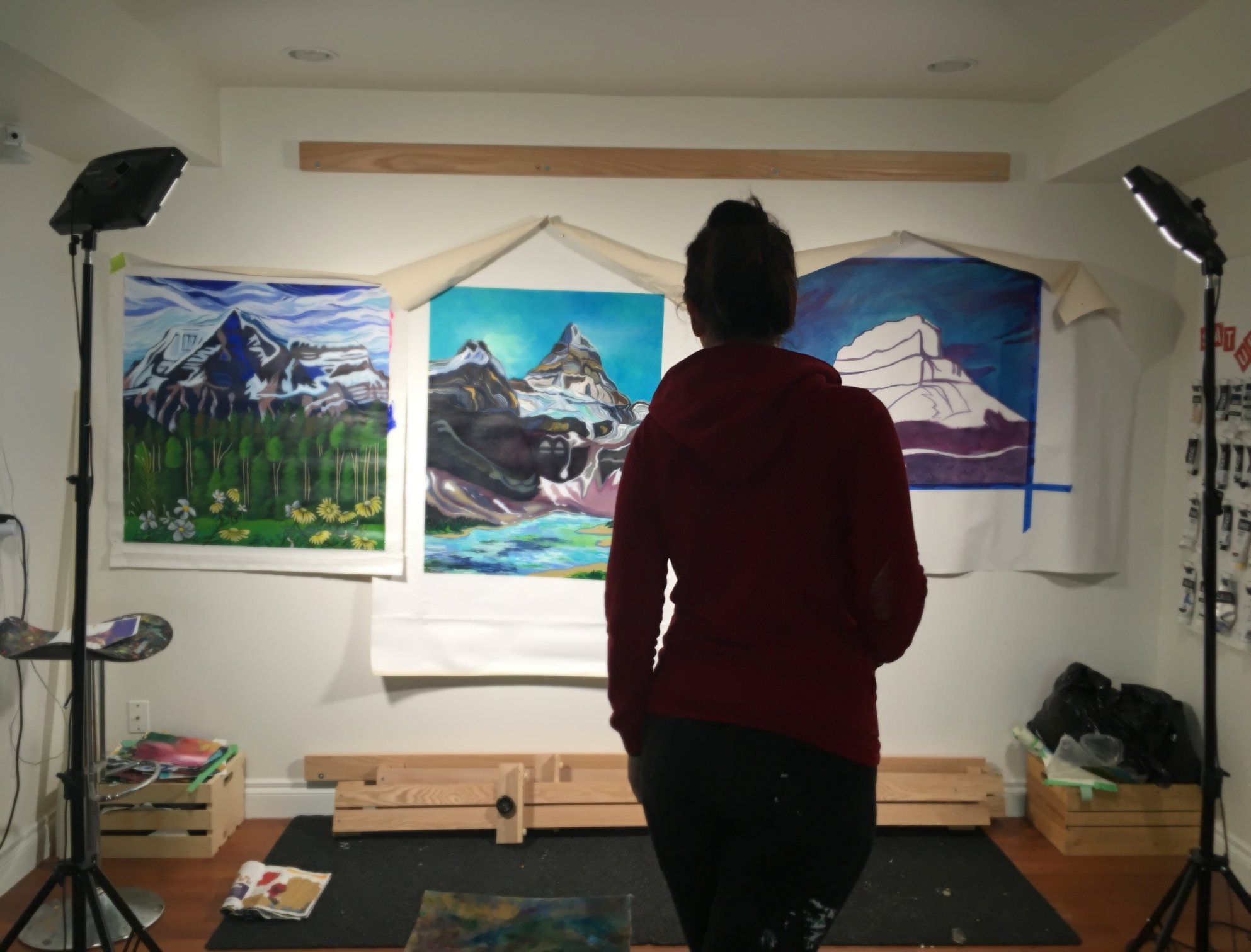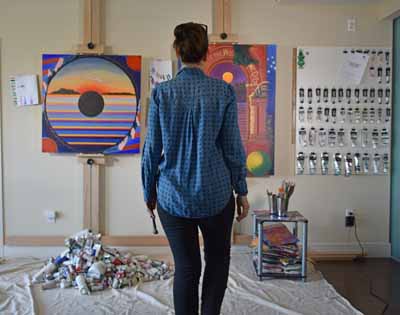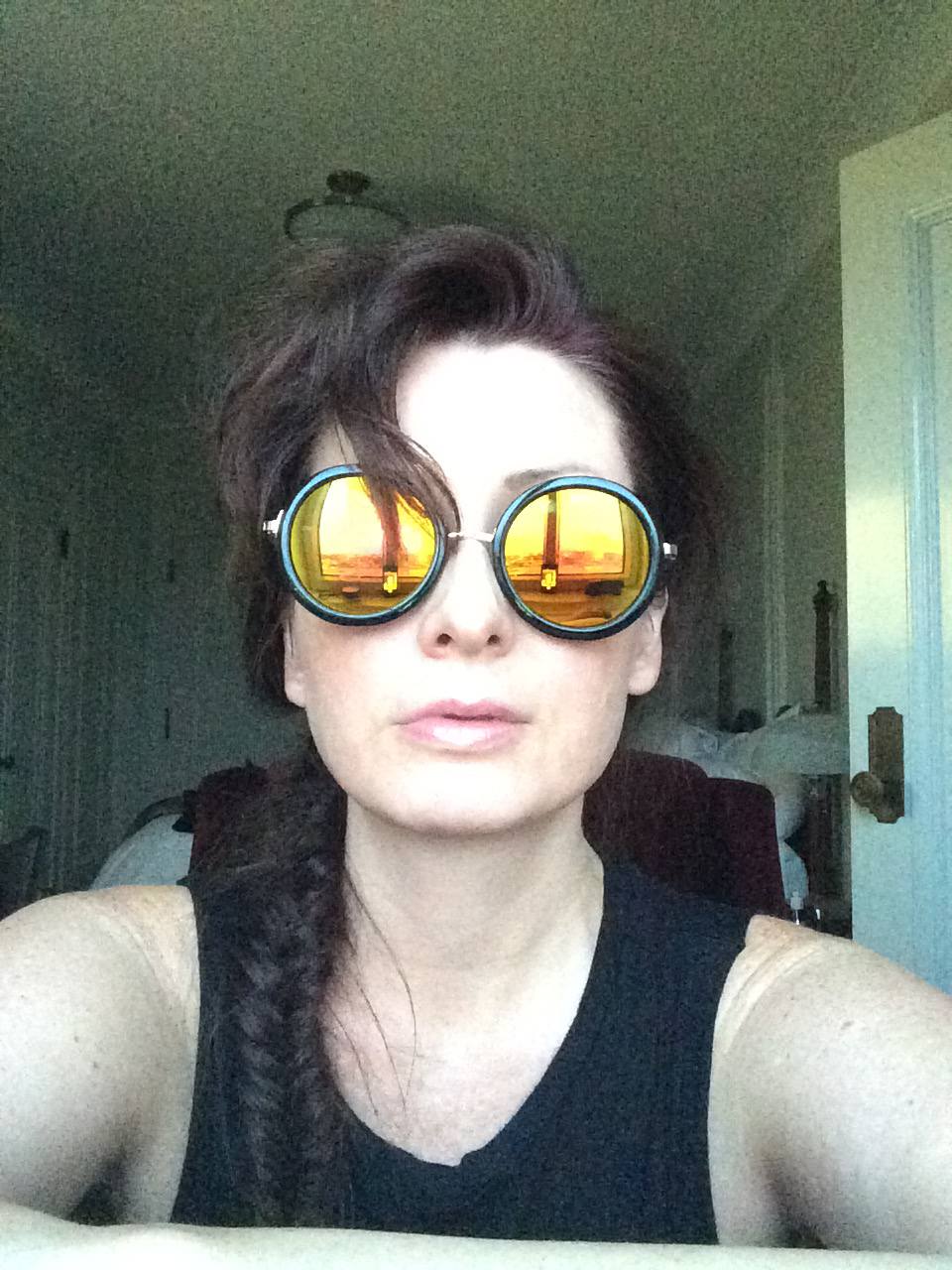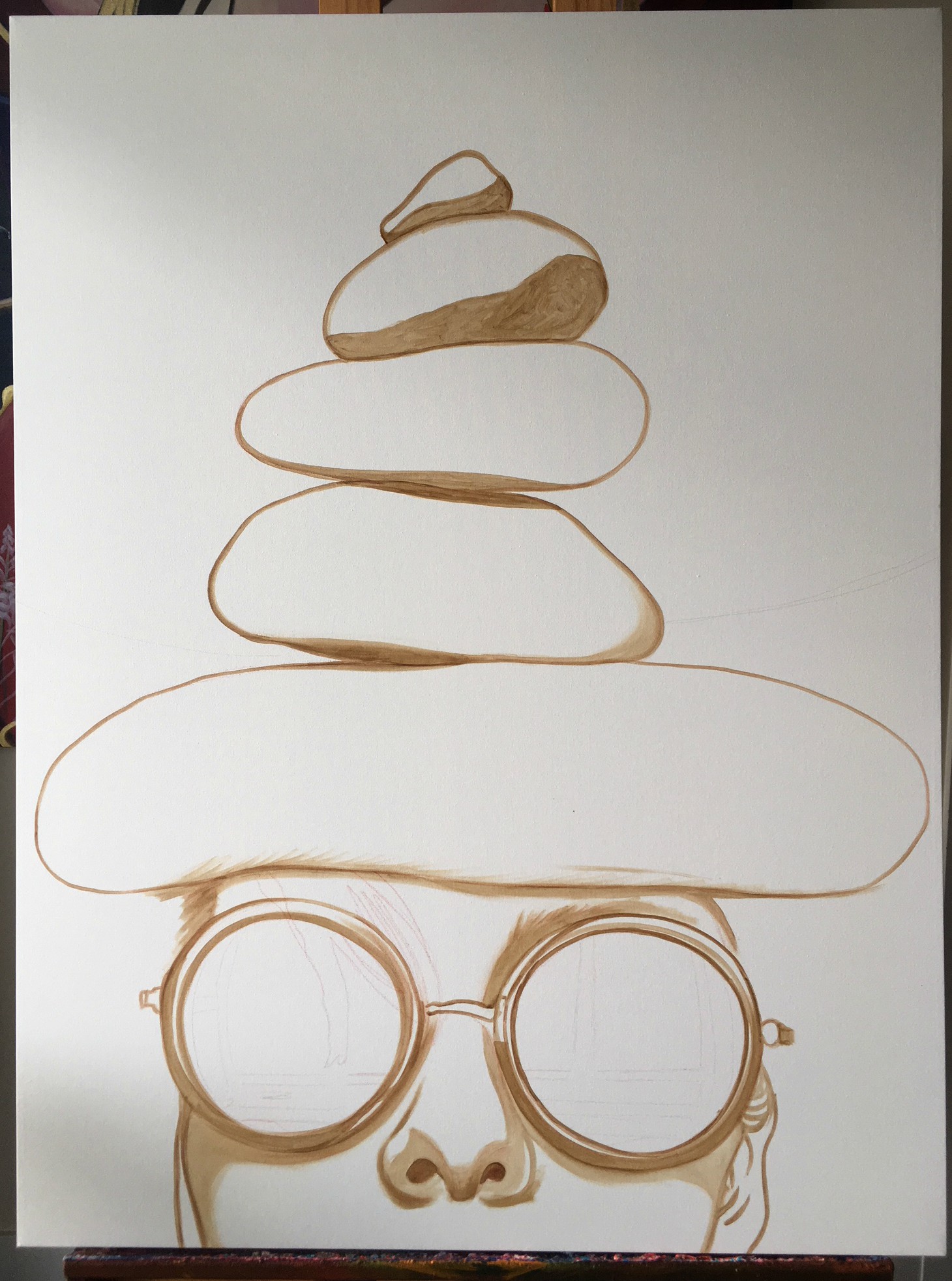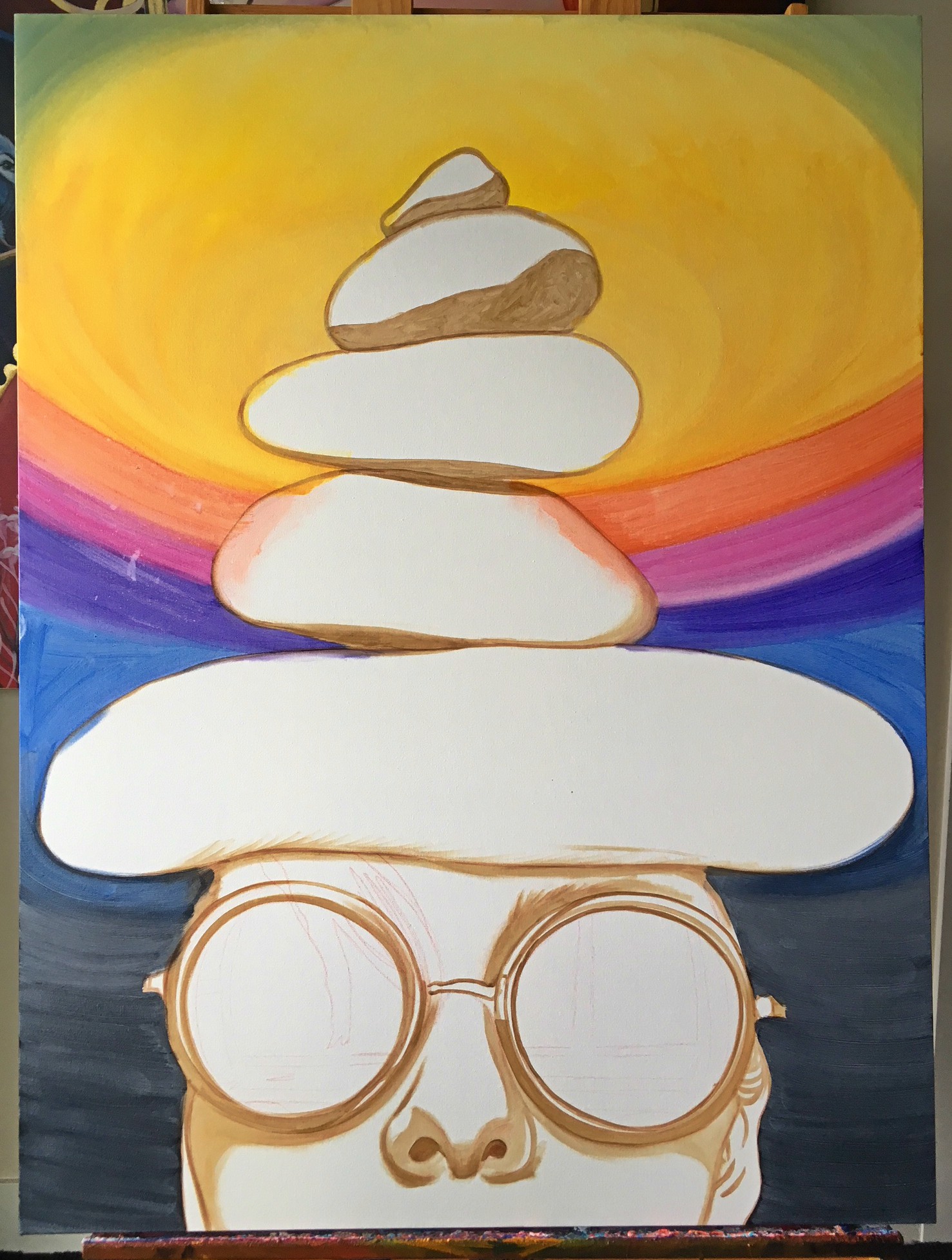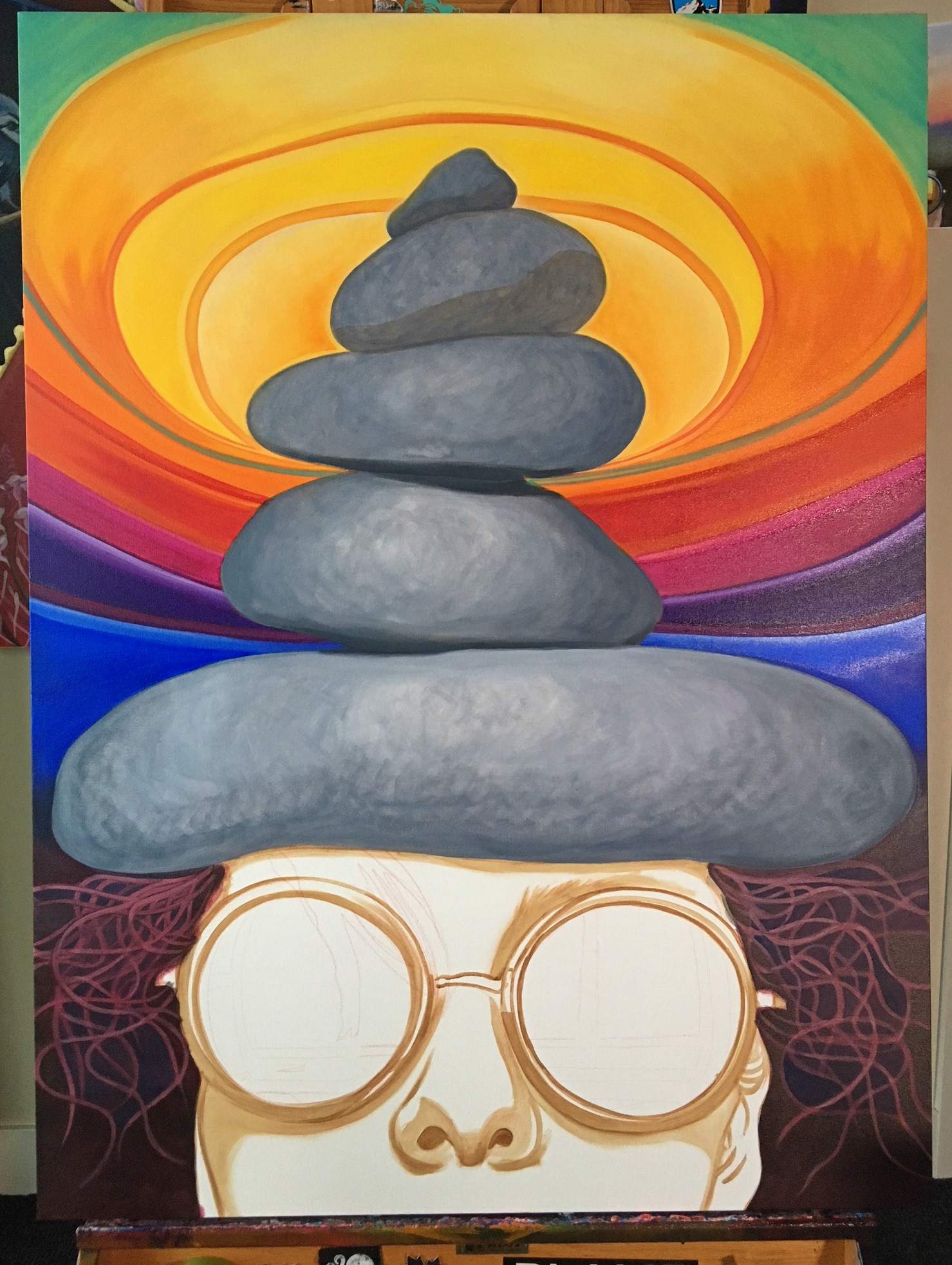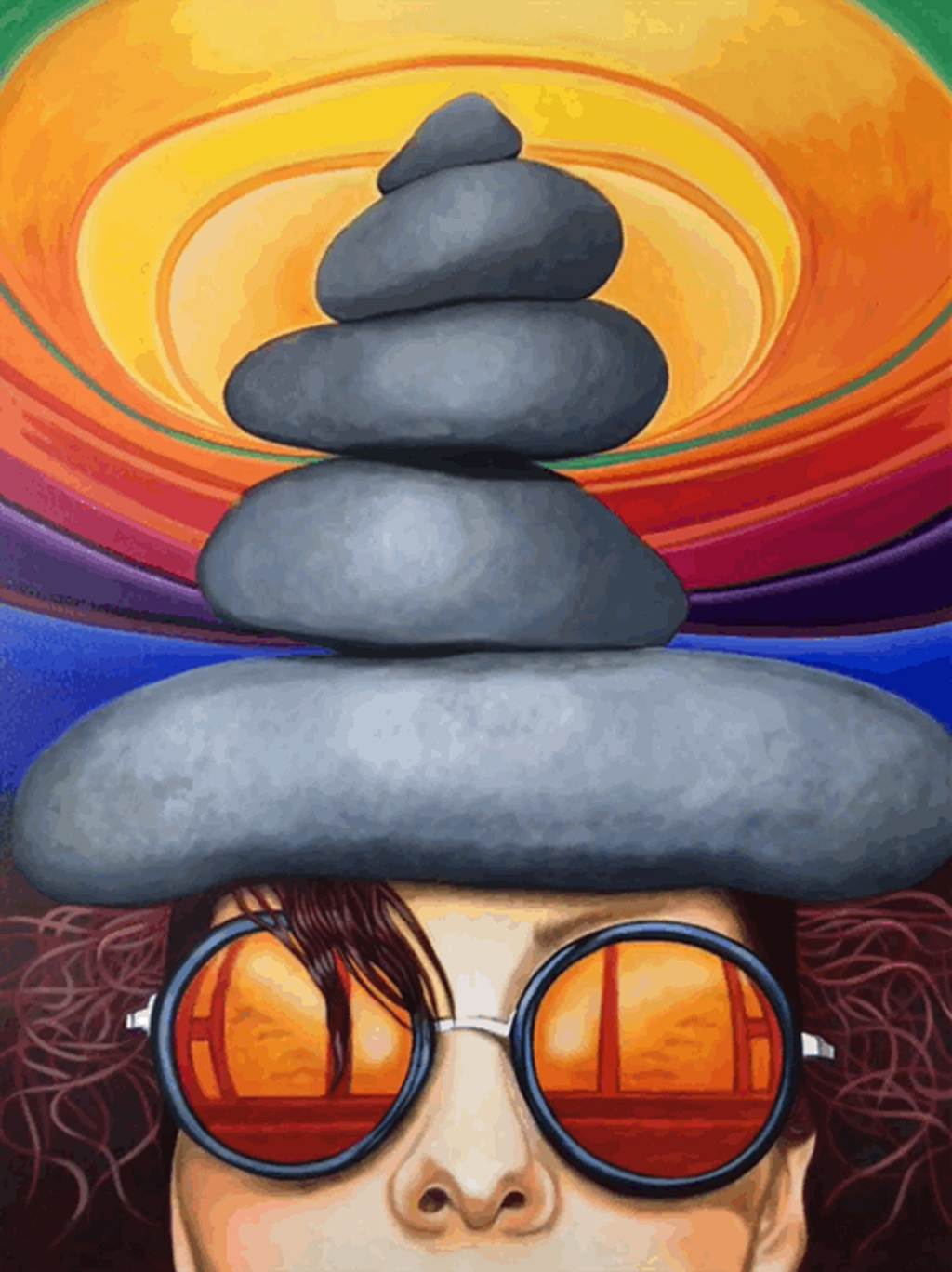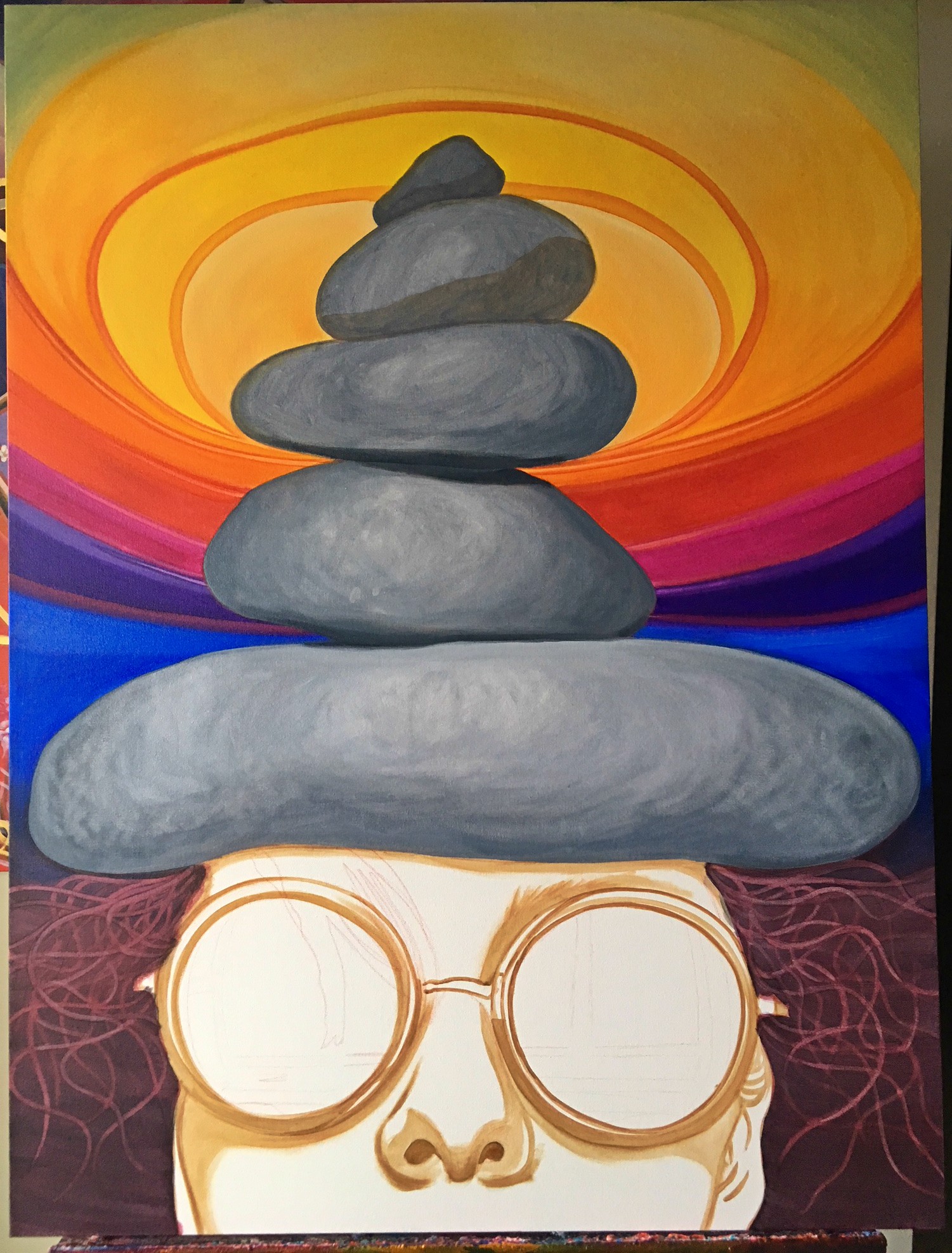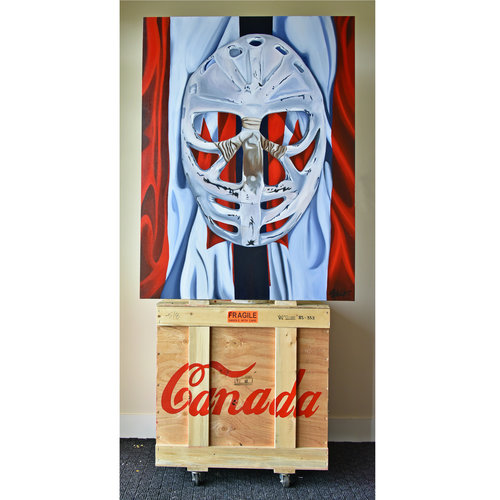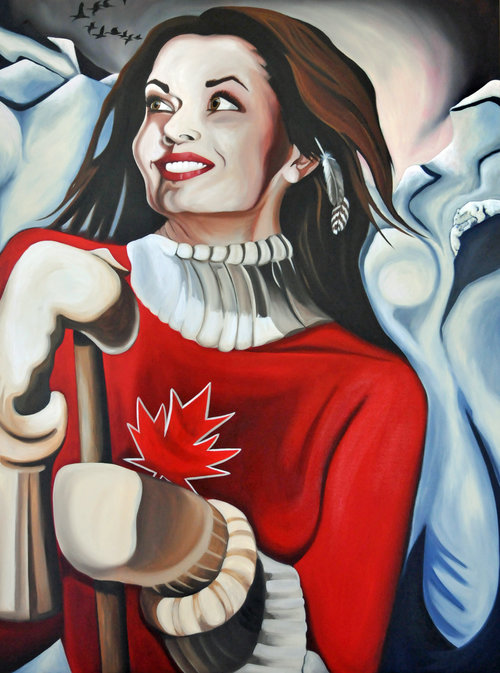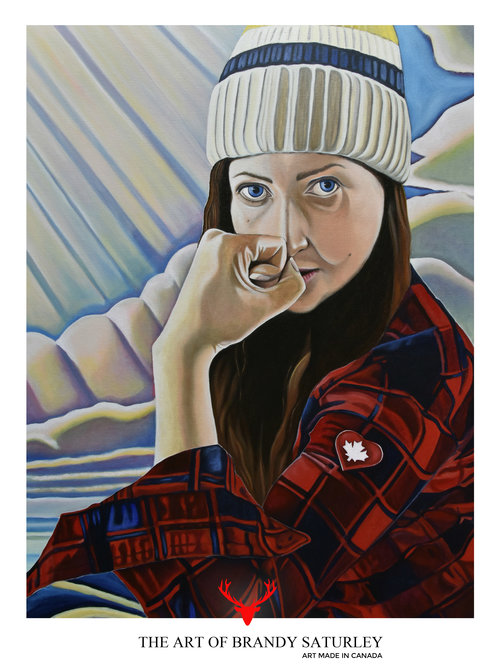Where Ideas Come From and The Creative Process
Have you ever wondered where a painting begins for an Artist? Ideas come from all over the place, and filter through our aural and visual channels as well as through taste and touch. For me, the idea comes long before my brush ever hits the canvas and the creative process that leads to a finished painting, from inception of an idea to fruition, can be immediate, but more often ruminates and grows for a long time before taking flight.

Saturley at work on the beaches in Chance Cove, Newfoundland – photo: Penny Rogers
This first painting of 2024 has me coming off an October experience making paintings in Newfoundland. While I was in Newfoundland I captured thousands of photos and videos of my days in and outside of the studio, this is where ideas begin for me, in capturing the details of the experiences I am having through the medium of photography.
My paintings are often a compilation of ideas, objects and moments, all collaged into one visual story, which I then render on the canvas and in this case a lovely wood panel. The beauty of painting on wood panel is the grain and texture and softness of the surface. Rather than the weave of a canvas and microscopic bumps it creates, wood panel is smooth and flat and without texture, unless you paint on un-primed raw panel and let the wood become saturated with an underpainting of neon gouache, which is what I have been experimenting with lately. It’s chalky, even pastel-like, but with the ease of paint on brush. I love the softness and the grain.
Ferry rides, a common thread in my life as a Vancouver Islander and a newfound ‘Come From Away’ to Newfoundland, serve as a timeless muse. ‘Island Time’ is a homage to the ebb and flow of these journeys, where every ferry ride unfolds a new chapter waiting to be captured. The photos that shaped this piece encapsulate the essence of ‘Island Time,’ a term resonating with the rhythm of nature, where the mainland’s hurried pace surrenders to the tranquil embrace of a more unhurried existence.
The Creative Process – I’m on Island Time
The photos above, influenced this new piece titled, ‘Island Time’ a term that we use here often as the mainland moves at a much faster pace, and we like to enjoy the flow of nature.
This painting on wood panel captures a moment of serene introspection as a woman stands by a window on a ferry, gazing out into the vast expanse of the ocean. The soft hues of the sunset cast a warm glow on her face, creating a contemplative atmosphere. In a surreal twist, a mesmerizing rock hovers gracefully above her head, defying gravity. The juxtaposition of the ordinary scene with the fantastical element evokes a sense of timelessness and mystery. This painting invites viewers to immerse themselves in the tranquility of the sea journey and embrace the surreal beauty of the moment, where the ordinary meets the extraordinary.
Learn more about this original painting here.

